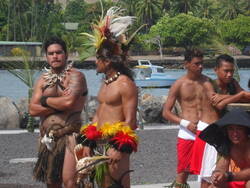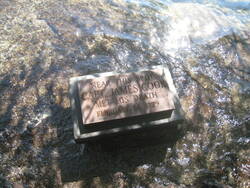Further Media



Producer unknown to us
Oceania, Polynesia, Hawai'i archipelago (Owyhee/Big Island, Mau'i, Kaua'i o. Ni'ihau)
Before 1781
Boar tusks, Olonā fiber (Touchardia latifolia)
Acquired in 1773–74 or 1777 on Captain James Cook’s second or third expedition in the Pacific. It is yet unknown by whom the object was acquired.
Brought from Great Britain to Germany by Benjamin La Trobe, a Moravian working in London.
Inv. no. 66271
The arm ornament kupe'e ho'okalakala from the Herrnhut Cook collection consists of 17 concave outward-facing boar tusks. They were tied together with cords of a particularly strong and flexible plant fibre – the Olonā nettle, which is endemic to Hawai'i.
Captain Cook, on his third expedition in 1779, noticed two types of this arm ornament while staying in Kealakekua Bay on Big Island. According to his record, there were “hogs teeth laid parallel to each other” on the one hand, and on the other “some of which, made only of large boars tusks.”
In the spiritually influenced culture and aesthetics of Polynesia, the upper arm ornaments made of boar were worn during sacred ceremonies and had a direct reference to the gods: When Polynesian sailors first reached the Hawai'ian archipelago around 500 CE, they brought dogs and chickens as well as pigs from the western Pacific in their double-hulled canoes.
Pigs, after the human sacrifice, were regarded the highest-quality offering to the ancestral gods throughout Polynesia. As a food source, pork was reserved for leaders and rulers who derived their origin from the gods (ali’i). They might share their pork with male followers as a special token of favor. The lower caste of the strictly hierarchical Polynesian society, on the other hand, was forbidden to eat pork (kapu).